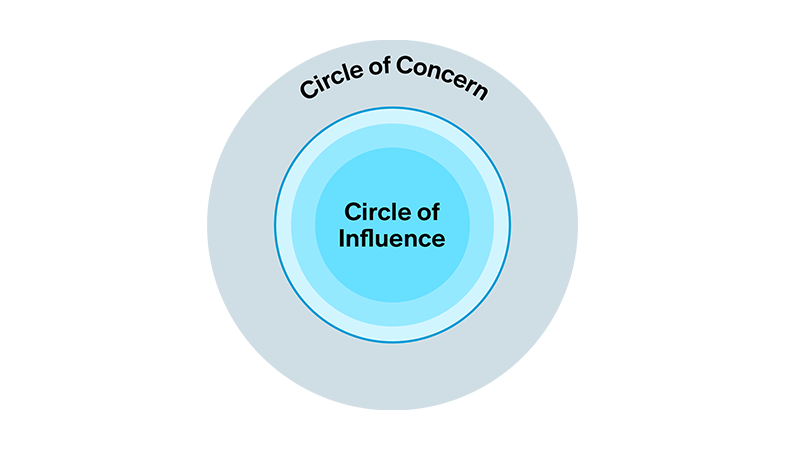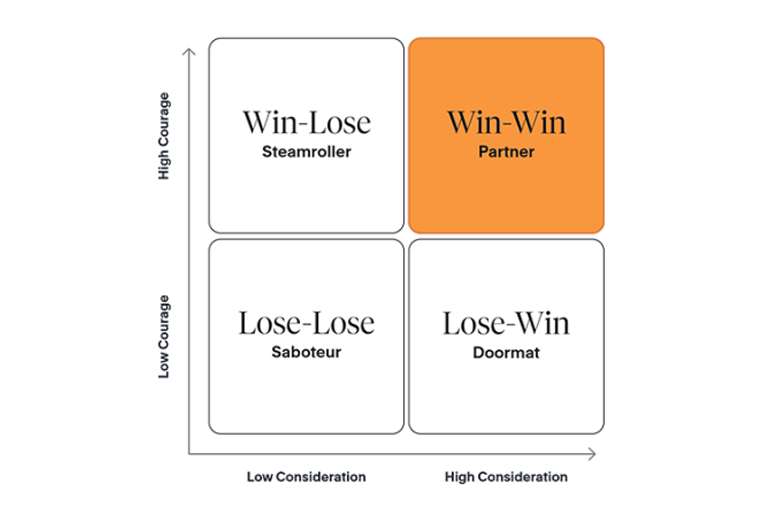Leading Change in Times of Uncertainty: The Power of Change Leadership

In today’s business environment, change is not just inevitable—it’s a constant. Not only do 42% of businesses expect the general economic slowdown in 2025 to transform the way they operate, but business leaders are bracing for seismic shifts in the wake of rapidly evolving AI, supply chain and labor shortages, and global uncertainty.
Whether driven by technological advancements, market shifts, or global challenges, change often arrives unexpectedly—forcing organizations to adapt quickly or risk falling behind. In times of uncertainty, the ability to navigate and lead change becomes critical to success. Effective change leadership ensures that organizations can not only survive but thrive in the face of disruption.
Leaders who understand the dynamics of change and can guide their teams through uncertainty will create a resilient, thriving culture that embraces change as an opportunity rather than a threat. Let’s explore how leaders can inspire their teams, foster a culture of growth, and navigate organizational change effectively to develop a more future-proof organization that can stand the test of time.
What Is Change Leadership?
Change leadership involves guiding individuals and organizations through transitions—whether triggered by internal shifts or external disruptions—and driving behavioral change for improved results.
Unlike traditional management, which focuses on maintaining stability, change leadership prioritizes inspiring and motivating people to embrace new ways of thinking and working. It is rooted in understanding the human element of change, addressing concerns, and helping individuals see and embrace the benefits of change.
At its core, change leadership is people-centric. It emphasizes the emotional and psychological aspects of change, helping individuals understand why change is necessary and how it will ultimately benefit them and the organization. Leaders who excel in this area focus on building trust, fostering open communication, and creating a vision that inspires action and commitment.
What Role Does Leadership Play in Times of Disruption or Uncertainty?

A plan gives both leaders and teams a path forward in times of change.
In times of disruption, effective leadership becomes more crucial than ever. Leaders are responsible for setting the new direction, aligning the team with the vision, and ensuring everyone is equipped to adapt. They provide the stability and clarity individuals need to navigate uncertainty.
Effective leadership in times of disruption involves creating a strategic framework for change, ensuring that every action taken is aligned with the organization’s long-term goals. Leaders also need to help teams manage the emotional challenges that come with uncertainty, ensuring people feel supported and engaged throughout the transition.
The role of leadership in driving change through uncertainty goes beyond strategic leadership planning. It requires adaptability, compassion, and a proactive approach to solving problems and creating opportunities in times of change. By focusing on both the tactical and emotional elements of change, leaders help their teams embrace new challenges and thrive in shifting landscapes.
Overall, navigating change requires an inspiring vision, clear communication, and the ability to provide support throughout the change process. To that end, there are some essential habits and mindsets that can help leaders and their teams operate more effectively during these periods of uncertainty.
Inspiring Change: Mindset and Habits
To lead change effectively, leaders must first adopt the right mindset and foster habits that encourage growth and resilience.
Habit 1: Be Proactive®, the first of the 7 Habits of Highly Effective People®, encourages leaders to take initiative and anticipate challenges before they arise. In times of uncertainty, proactive leadership ensures that changes are not simply reactive; instead, they’re well thought-out and aligned with long-term goals. Rather than focusing on the circumstances that are outside of a leader’s control—like global economic conditions or the growing popularity of AI, which fall under the Circle of Concern™—effective leaders instead zero in on the things they can change—like redistribution of internal resources or strategic planning—that lie within their Circle of Influence®.
The Circle of Influence
When we’re proactive, we focus our efforts on our Circle of Influence®. We work on the things we can do something about. This allows us to expand our influence over time and create more choices and opportunities. When we’re reactive, we get stuck focusing on our Circle of Concern™—on things over which we have little or no control.

Habit 2: Begin with the End in Mind® is equally important for leaders navigating change. By setting a clear vision and articulating the desired outcome, leaders can help their teams understand the purpose of the change and the benefits it will bring. Even when the future vision has to shift, a forward-focused mindset enables individuals to stay motivated when navigating challenges and fosters a sense of ownership over the change process.
Additionally, Habit 3: Put First Things First® can be immensely helpful for leaders and teams who are facing uncertainty and change. In the midst of shifting priorities, this principle reminds individuals to make time for the things that truly matter most. Rather than become distracted by minor issues or drop everything to put out every little fire, we need to remember to focus on the most impactful tasks that directly contribute to the organization’s mission, values, and high-priority goals.
When change happens rapidly, it’s easy to become overwhelmed and give equal emphasis to all tasks. Learning to decipher what’s both urgent and important from the seemingly urgent tasks that serve as distractions will help leaders and teams remain focused and reduce overwhelm during periods of uncertainty.
Finally, embracing a growth mindset—as is exhibited by Habit 4: Think Win-Win®—is crucial for organizations dealing with change. Sometimes known as the principle of abundance, Think Win-Win is all about finding mutually beneficial solutions in all human interactions. This abundance mindset allows us to view change as an opportunity, rather than as a threat.
When we believe there’s enough for everyone, the fear-based mindset of scarcity—which often leads us to react in negative ways to change—disappears. Instead, we look for ways that all parties can win and approach others with generosity and partnership. Leaders who promote a “we’re all in this together” approach through open communication, collaborative problem-solving, and a balance of courage and consideration will empower their teams to support each other’s needs as they innovate to find new solutions as conditions evolve.
Why Think Win-Win?
Win-win requires that we be both high in courage and high in consideration, that we approach others with generosity and a sense of partnership. When we do that—when we demonstrate our investment in their interests and successfully advocate for our own needs—we build stronger, more trusting relationships.

By cultivating a mindset of proactivity, vision, prioritization, and mutual wins, leaders can inspire their teams to embrace change and approach it with confidence.
Building Trust to Lead Change

“Extending trust is the ultimate act of leadership, the defining skill that transforms a manager into a leader.” –
Trust is the foundation of any successful change initiative. Without trust, even the best-laid plans will falter, as teams may resist or disengage from the change process. Building trust is essential for leaders seeking to guide their organizations through change, as it enhances communication, fosters collaboration, and reduces resistance.
When trust is high, people become confident, and communication, creativity, and engagement improve. Trust ultimately accelerates the change process, allowing for quicker decision-making, better collaboration, and stronger relationships throughout the organization.
In times of change, trust helps reduce uncertainty by ensuring that team members feel supported and are more likely to openly communicate their concerns and ideas. A culture of trust facilitates smoother transitions, even in the most uncertain environments.
With that in mind, what are some actionable steps that leaders can take to build trust within their teams?
- Create transparency by sharing more about decisions and discussions happening in real time.
- Take accountability for missteps or recount past mistakes to illustrate growth.
- Give credit to your team when you receive positive feedback about their work.
- Devote a few minutes each day to ask meaningful questions about your direct reports’ lives outside of work.
- Clarify expectations when assigning work and share examples to set team members up for success.
- Listen to your employees’ points of view before you share your own opinions or feedback.
- Extend trust to your team members by removing barriers and empowering them to make choices as appropriate.
While these trust-building behaviors are impactful even during times of relative calm, they are especially crucial during disruptive periods—when suspicion, confusion, and fear can easily take over. By making a concerted effort to foster trust with their teams, leaders can fuel engagement, collaboration, and innovation at a time when those crucial aspects of success might otherwise falter.
Watch our free webcast: How to Build Connection and Collaboration in Times of Change
The Most Trusted Leadership Company
Learn how your organization can use our people, content, and technology to create collective action and meaningful change.

Overcoming Obstacles to Change Leadership
Resistance to change is one of the most common obstacles that leaders face. In fact, Gartner data reveals that two-thirds of employees are resistant to change. Employees may understandably feel uncertain, fearful, or disconnected from the proposed changes, leading to resistance or disengagement. Another challenge is misalignment—when teams or departments do not share the same vision or commitment to the change.
By listening to employees’ concerns, actively engaging them in the change process, and ensuring clarity around expectations, leaders can mitigate resistance and build alignment. Leaders must also model the behaviors they want to see in their teams, demonstrating commitment to the change process and encouraging others to follow suit.
When guiding your team through change, keep these takeaways in mind:
- How you communicate the change matters most. Whether or not you’ve had a direct stake in decision-making, it’s crucial that you communicate this change in a way that resonates with your team members and builds further connection. First, explain why the change is happening and what it means for your team. Then, listen to their concerns, help them set new goals, and provide them with the ongoing support they need. Ensuring your team understands the thought process behind the change, how it will impact them, and that they know they aren’t alone will go a long way.
- Change follows a predictable pattern. Most of us are naturally resistant to change; in fact, neuroscience shows that our brains are essentially hard-wired to fight against it. But historically (and even prehistorically), survival of the fittest has come down to those that can adapt in the face of change. And while each change will have its own unique set of circumstances, there’s a completely predictable pattern to change—illustrating that you can, in fact, experience some predictability in unpredictable times. This “change model” follows individuals from the status quo through the stages of disruption, adoption, and innovation—and effective leaders can engage their people to transition through those stages more quickly to improve results. When leaders help their teams manage their reactions to change and move forward more successfully, they can embrace this new opportunity without immobilizing fear of the unknown.
- Frame change as an ongoing process that’s integral to your culture. More than likely, any change you and your team will face doesn’t have a definite end. It will continue to have ripple effects throughout the organization, industry, and world. And just as you think you may be over the hurdle, it’s probable that another change will come in and disrupt things yet again. By encouraging agility and resilience in your team—and creating a culture that views change as an opportunity for growth—you can ensure that change is part of the process, rather than an exception to the rule.
- Keep expectations clear. Ambiguity is often the chief cause of interpersonal relationship issues—and it’s everywhere during times of change. Leaders can combat the doubt by getting crystal-clear on expectations, goals, responsibilities, and outcomes. If team members feel the rules are vague or they aren’t sure about who needs to take accountability for what tasks, this confusion will further deflate trust and make change management even harder to accomplish. Get ahead of any potential chaos and confusion by clarifying roles and responsibilities with your team as changes happen (or even before they officially happen).
- You can’t change the fruit without changing the root. As Stephen R. Covey famously said, you can’t expect a different result without changing the initial processes. Leaders who want to facilitate different results need to focus on the power of collective behavior change. How your team thinks, feels, and acts in the wake of new initiatives, changing policies, and evolving technologies will have a direct result on outcomes. It’s beneficial to focus on those “roots” to help team members embrace the idea of change, rather than run and hide from it. By changing the root, you can then change the fruit—whether that’s a more engaged, collaborative team or improved strategic execution.
Sustaining Change Over Time
Successful change is not just about the initial transition; it’s about sustaining that change over the long term. To ensure lasting success, leaders must focus on providing continuous feedback, reinforcing new behaviors, and aligning incentives with the desired outcomes.
A key strategy for sustaining change is maintaining open lines of communication and regularly checking in with team members to assess progress. Holding regular 1-on-1s will provide the ideal opportunity to gauge individual feedback, address concerns, and offer support—ensuring that team members remain engaged and aligned with the change. Recognizing and rewarding new behaviors reinforces the change, helping it become embedded in the organizational culture.
Ongoing learning and development programs also play a critical role in ensuring that changes remain effective and sustainable, as well as helping team members feel prepared to take on new responsibilities and respond to change with resilience. Leaders must ensure that new processes and behaviors are integrated into daily operations, providing consistency and stability over time. Creating a culture of feedback will also prove key to ensuring that employees feel supported and empowered to continuously refine and adapt both their individual effectiveness and their responses to change.
Drive Lasting Change with Change Leadership
In the end, the ability to lead change effectively is the cornerstone of organizational success in times of uncertainty. Leaders who are skilled in change leadership help their teams navigate disruptions with clarity, resilience, and purpose. By fostering a mindset of growth, building trust, and overcoming obstacles, leaders can drive lasting transformation within their organizations.
Learn more about how thriving organizations respond to uncertainty and disruption for improved cultural and leadership development, individual effectiveness, and breakthrough results.








